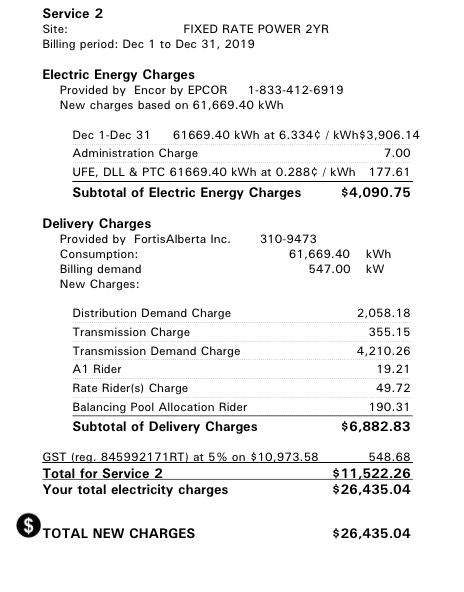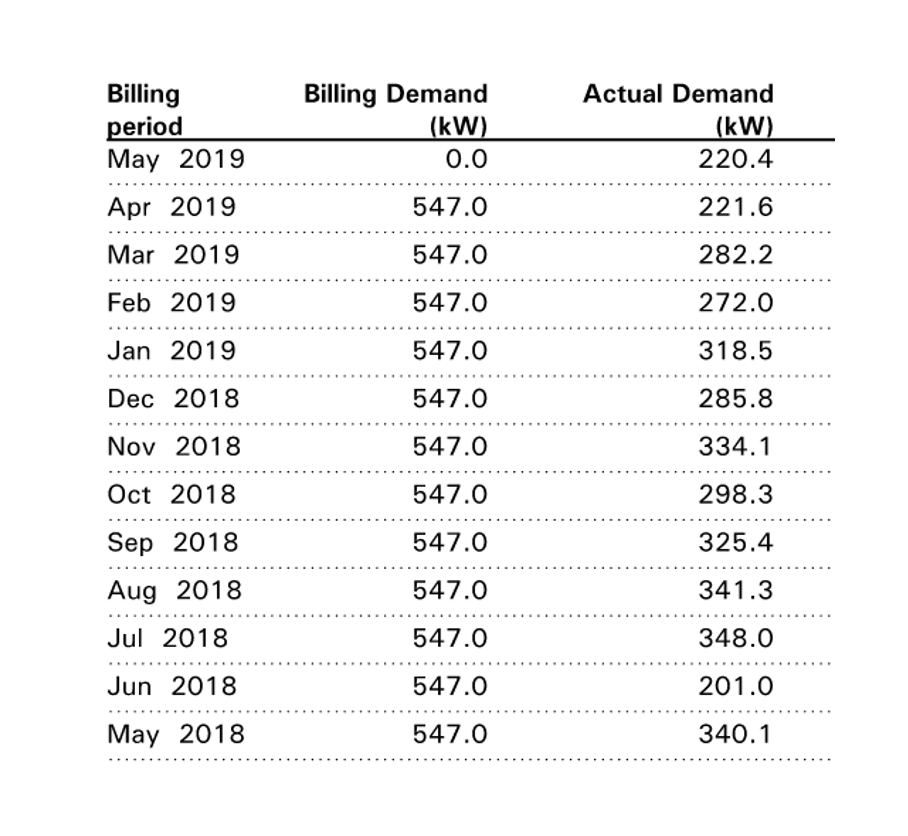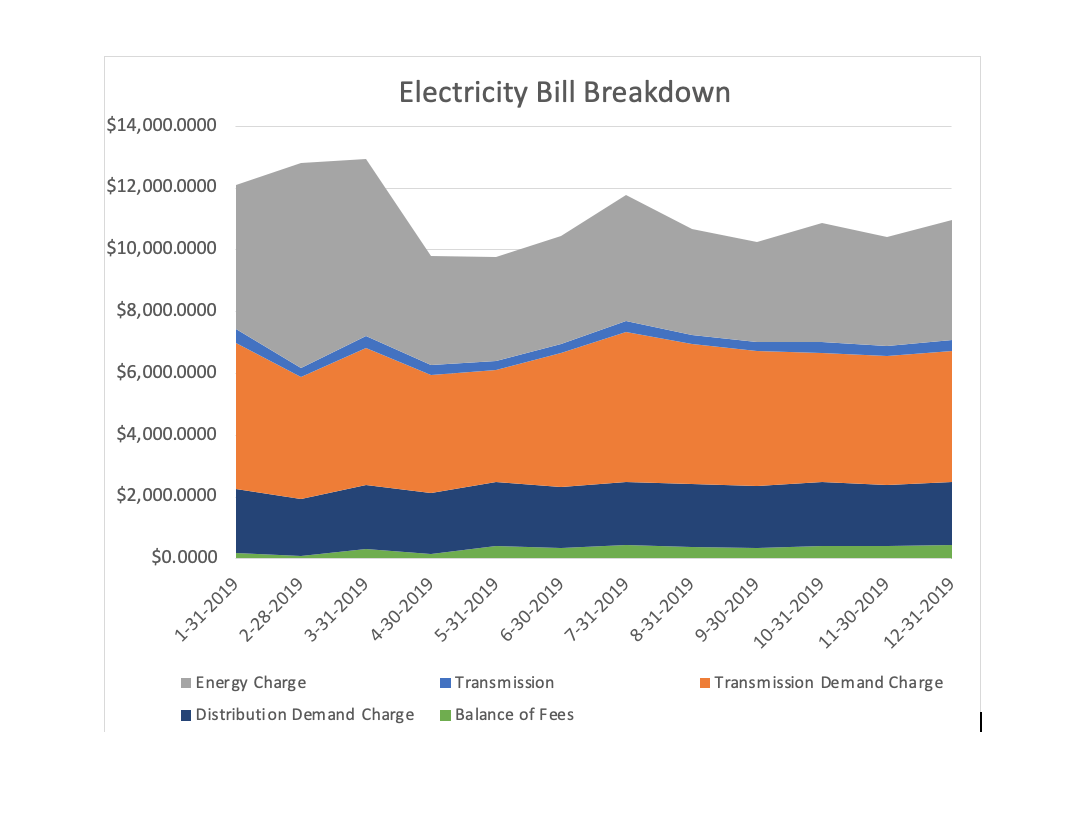Part 1 – Demand Charges
Did you know about over 50% of your energy bill comes from delivering power to your business? Here’s some tips for understanding your electricity bills!
Go take a look at your energy bill and take a look at what you are paying in delivery fees. If your business is a large user of electricity (usually over 250,000 kWh per year) then there will be demand charges.
Here is an example:

Peak Energy Demand
If your business requires high amounts of energy for short periods of time, this could mean a much higher energy bill.
And here’s why:
Peak Energy Demand occurs when a significate number of electrical devices are being used at the same time (such as machinery, compressors, air conditioning, refrigeration, ventilation, lighting, etc.)
The utility has to build their equipment to meet the Peak Demand, so to recoup those costs, they will bill for periods of high demand.
Demand charges are based on the highest amount of electricity you use in the billing cycle and recorded in 15-minute intervals. Often, the demand charge is based on 80% of the peak demand used for ONE 15-minute interval in a whole year – even if your demand for the rest of the year is 20% of the peak. And it makes sense – the wires and transformers feeding the building need to be large enough to safely carry that power.
Demand charges reflect that your utility needs to have that amount of capacity standing by to service your business at any time.
You could be paying a lot more for energy if you don’t schedule it wisely.


Note the bottom two items are mostly fixed, but the top 3 items can be reduced with solar!
Inferno Solar can help you make sense of your energy bills and provide suggestions on how to reduce them.
In following posts, we will continue to break down electricity bills and help business owners with understanding their electricity bills – and how to save money and keep it in their business!
To learn more about our innovations in the solar power sector, follow us on LinkedIn, Facebook, YouTube, and Instagram.
Curious about the other projects we’ve had the pleasure to work on? View more of them here!